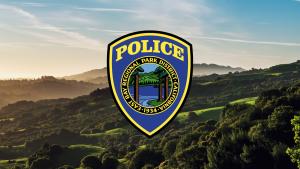Brian Holt Helps Develop Regional Park to Honor WWII-Era Civil Rights Event
Brian Holt Helps Develop Regional Park to Honor WWII-Era Civil Rights Event
DURHAM, N.C. – Duke University alumnus Brian Holt is working to ensure that one of the deadliest home-front disasters of World War II and the racial injustices within the military it exposed will never be forgotten.
Holt received his master’s degree in 2012 through the Duke Environmental Leadership Master of Environmental Management (DEL-MEM) program, a mostly online degree program for working professionals offered through Duke’s Nicholas School of the Environment.
He’s applying what he learned in his courses to develop a land-use plan and financing strategy for a visitors’ center and park at the site of the Port Chicago Naval Magazine National Memorial, located in the East Bay area of California.
In 1944, a U.S. ammunition ship exploded at the Concord Naval Weapons Station at Port Chicago, killing 320 sailors with a blast felt as far away as Nevada. Of those killed, two-thirds were African-American. It was the largest home-front disaster of World War II.
Following the deadly explosion, 258 surviving sailors refused to return to work unless they received training in safer procedures for loading the ammunition. Lack of this training was blamed for the explosion.

The former naval base barracks after the deadly explosion that occurred there. (Courtesy of the National Park Service.)
Fifty of these sailors were subsequently charged with mutiny, and became known as the Port Chicago Fifty. Their trial and mutiny conviction gained national attention and exposed the racial injustices associated with segregation in the military. This led to the signing of Executive Order 9981 by President Harry Truman that called for the desegregation of the U.S. Armed Forces.
In 2009, President Obama created the Port Chicago Naval Magazine National Memorial to honor the victims of the disaster and to bring attention to the civil rights struggle exposed in the disaster's aftermath. The memorial is part of the National Park Service.

The site of the Port Chicago Naval Magazine National Memorial.(Courtesy of the National Park Service.)
In his role as principal planner for California’s East Bay Regional Park District, Holt is now working to create a regional park adjacent to the memorial that would cover about 2,500 acres of the land formerly occupied by the naval station. He is also working in partnership with National Park Service to develop a visitors’ center at the memorial.
Holt’s coursework through the DEL-MEM program was vital to his work on this project, he says.
He used his Masters Project to develop a conceptual land-use plan for the proposed facilities and identify potential financing options for their development. This included identifying partnerships, grants and volunteer groups to support the endeavor, and creating an environmental mitigation plan for residential and commercial developments that that had been proposed in adjacent areas. It also involved providing recommendation to the East Bay Regional Park District to ensure that the new park would provide green space, trails and other outdoor recreation resources, and protect environmental resources.
“We’re trying to devise a plan that ensures the protection of species on the property while providing public access,” he says.
An Economics of Environmental Management course he took with Brian Murray, research professor of environmental economics, gave him concrete tools with which to advocate for the preservation of open space at the former naval base.
“That course gave me a different lens to look through some of these types of issues,” Holt says. “Being able to speak about supporting a place not just because it’s pretty, but because it makes economic sense, was key.”
He also took a community planning course with Elizabeth Shapiro-Garza, assistant professor of the practice of environmental policy and management, in which he learned to identify stakeholder interests and build partnerships, which has been essential for his collaborative work with the National Park Service and the City of Concord, where the former port and military base is located.
In a continuation of this work, Holt has recently been engaged in the official process of applying to the National Park Service for the land to be conveyed to East Bay Regional Park District. He has also been analyzing how best to use and manage the property. He has led park planning exercises, involving the public and other stakeholders to determine what specific amenities and uses the park might provide.
Earlier this year, Holt received the 2016 Friends of Port Chicago Commemorative Hero Award in recognition of “his extraordinary vision, patience and determination leading the collaborative effort to establish a new regional park and visitor center for the Port Chicago Naval Magazine National Memorial.”
The award was given at an annual commemoration event for the anniversary of the explosion. The event was held at the site of the proposed visitors’ center, and featured talks by U.S. Secretary of the Interior Sally Jewell.
Holt’s next steps with the East Bay Regional Park District will be to finalize the conveyance of the land to the District, which he hopes to complete by the end of the year. In the meantime, he is also working on a variety of other projects around the East Bay region.
“We’re engaged in all those projects to work to complete a vision of an interconnected open space network that rings cities of the East Bay area,” he says.
- July 17, 2016 - Port Chicago Naval Magazine - Recipient of the Friends of Port Chicago Commemorative Hero’s Award [PDF]
- Friends of Port Chicago National Memorial [Website]
Tim Lucas
(919) 613-8084
tdlucas@duke.edu






